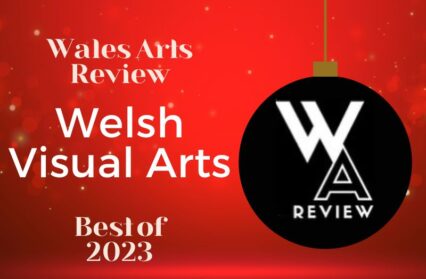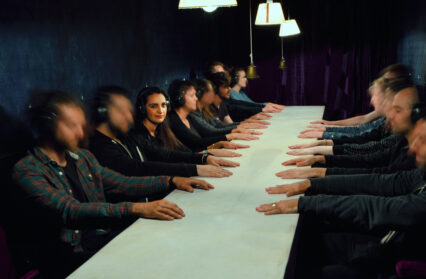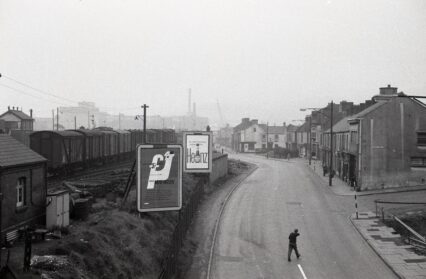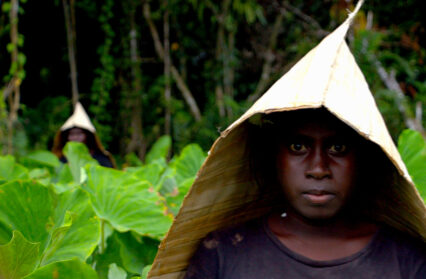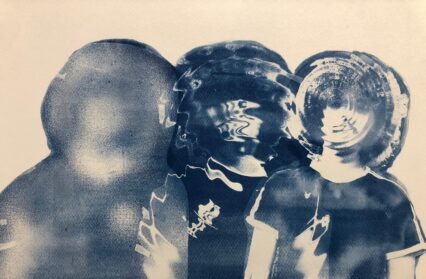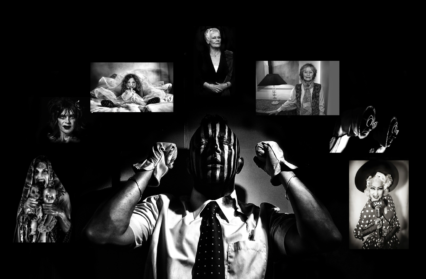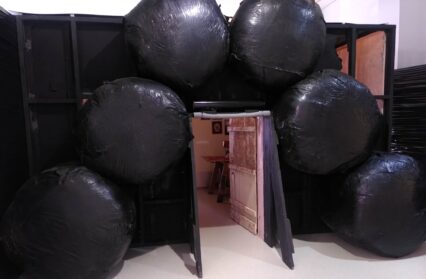Revolution is the theme as Gary Raymond explores the opening night of Cardiff’s International Festival of Photography.
There are times when the global climate means art can be cleanly divided into two categories: art that is political, and everything else that doesn’t matter. The real question is, when are those times most obvious to the many? Is it most obvious from the perspective of the eye of the storm? Or is it in hindsight? The opening exhibitions of this year’s Diffusion Festival – themed ‘Revolution’, if you needed any further guidance – asks this question quite pointedly, but juxtaposing one photographer whose work asks us to look back, and one who compels us to see history as part of a cycle, and ‘history’ as having very little to do with ‘things past’.
The Cardiff International Festival of Photography, (to give it its full title), launches with a weekend of giddying events and exhibition openings, setting up a month of city-wide installations – 2000 images from 60 photographers in 20 venues during the month of May – a carnival of serious conversation being had over circle-jerks of gesticulated wine glasses. Festivals of all kinds have their clichés, but Diffusion begins this year with a fiery and welcomed statement of intent, pairing a figure known as a lynchpin of the sixties counterculture scene, the late John ‘Hoppy’ Hopkins upstairs of the Ffotgallery Turner House in Penarth, with the impassioned kinetics of Argentine guest Marcelo Brodsky on the ground floor.
The work of Hopkins and Brodsky compliment each other well, aesthetically and politically – perhaps a little too well in parts, as the repetition of protest images turns somewhat cold before getting to the end of them, before they meld into Hopkins’ ‘celebrity snaps’. This is also a very male space, and although the programme for Diffusion as a whole is very diverse, perhaps something could have been done to have diluted the ageing fraternity that seemed to be front and centre for this opening night.
That said, in respect to politics, and as a statement that art should be responding to the current rise of totalitarianism, Brodsky – if maybe not so much Hopkins – was a good place to start for Diffusion.
To those in the know, Hopkins is more a ‘political figure’ than a ‘political photographer’. He co-founded the underground periodical The International Times, and opened the legendary UFO Club, which gave birth to Pink Floyd and others (you can spot a member of this clique a mile off by listening out for the implementation of the definite article when they say the Pink Floyd’s name). Hopkins was the kind of guy who made things happen. But it’s clear from this show that Hopkins’ real skill when it comes to photography was as a portraitist, politically more Lange than Evens. He had that unteachable talent for getting under the skin of his subject. The image of Allen Ginsberg reciting from his notebook in front of the Albert Hall around the time of the ‘Poetry Olympics’ in 1965, captures the manic glee of the beat poet on tour with all his mid-sixties Dylan-esque ramshackle energy. There is something of the fatigued performing monkey behind the eyes of Ringo Starr as he leans in to the camera. William Burroughs, arms caught flinging wildly, seems to here embody Kerouac’s portrait of him as Old Bull Lee in On the Road, who was all energy until about noon when the drugs wore off. These are very good photographs, and not just because we are looking at legendary figures. In the captured close-up of Malcolm X, for instance, there is a tenderness to the steel. The exhibition pays worthy tribute to a man whose camera benefitted from more than just being held by someone in the right place at the right time.
Photographs of the visits of Malcolm X and Martin Luther King jnr to London examine the physicality of political revolutionary motion, and to draw lines between activism of fifty years ago and, say, Black Live Matter today. But, as is pointed out in one of the tributes paid to Hopkins on the evening, ‘Hoppy’ had very little time for looking back, and this largely is what this exhibition of his work asks us to do.
There is something much more radical and significant going on in the work of Marcelo Brodsky, the Argentine artist. 1968 – The Fire of Ideas brings the mind immediately to the countercultural revolutions across the world in the late 1960s. In comparison to Hopkins’ sedate documentarianism, Brodsky’s work is explosive, aggressive, immersive stuff. The images are original archive prints of demonstrations taking place in major cities all over the world from 1967 to ’69 – Prague, Amsterdam, London, Rio, Kingston and many others. The protests are specifically against an array of malfeasances, from American involvement in Vietnam to freedom of speech violations, but they are all tied together by a sense of combined reaction to immorality and corruption in the establishment of the day. It is easy to see correlations between the protestors of then and the protestors of now – that is a given. But Brodsky uses these archives for his own expansionist ideas of time and the patterns of history. Painting directly onto the images, Brodksy pulls out parallels, highlights connections, draws the eye with explosions of colour – they are visually arresting images that pop with their pastel exudations.
But what Brodsky is also doing is attacking the idea of the “archive” as being a documentation of the past, and is exploring within the frame the idea that Derrida, among others, talked about as the deathless lifespan of archive material. These fifty-year-old photographs are not done with their work, and Brodsky’s palimpsests awaken the senses to the immortality of the battles we now find ourselves in. American poet and academic Susan Howe has spent a career exploring the notion that the archive is a living breathing entity that must be released from its cage to be not only fully understood, but fully exploited. And so as Howe creates a fourth dimension in her literary output in this way, so too does Brodsky create a virtual realm in which to experience his images. If Brodsky is the standard of political artist to be expected of Diffusion this month then the festival will be nothing short of vital.
More details of the Diffusion Festival can be found on their website here.


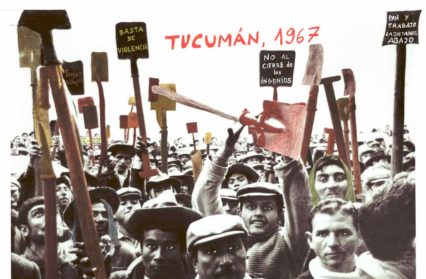
 Enjoyed this article? Support our writers directly by buying them a coffee and clicking this link.
Enjoyed this article? Support our writers directly by buying them a coffee and clicking this link.
